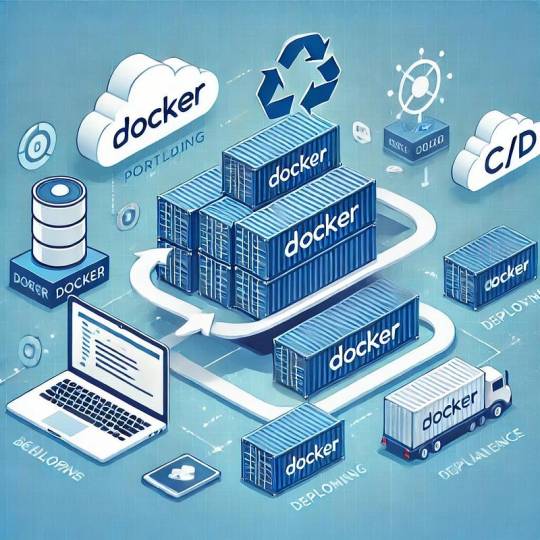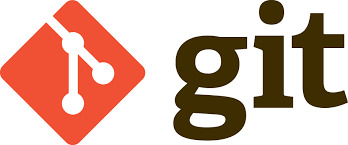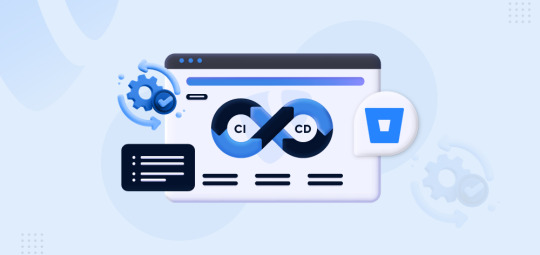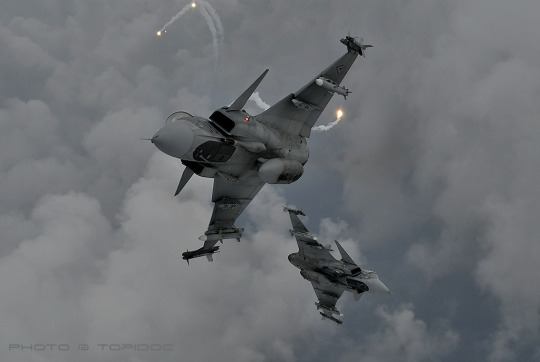#docker tag command
Explore tagged Tumblr posts
Text
Docker Tag and Push Image to Hub | Docker Tagging Explained and Best Practices
Full Video Link: https://youtu.be/X-uuxvi10Cw Hi, a new #video on #DockerImageTagging is published on @codeonedigest #youtube channel. Learn TAGGING docker image. Different ways to TAG docker image #Tagdockerimage #pushdockerimagetodockerhubrepository #
Next step after building the docker image is to tag docker image. Image tagging is important to upload docker image to docker hub repository or azure container registry or elastic container registry etc. There are different ways to TAG docker image. Learn how to tag docker image? What are the best practices for docker image tagging? How to tag docker container image? How to tag and push docker…

View On WordPress
#docker#docker and Kubernetes#docker build tag#docker compose#docker image tagging#docker image tagging best practices#docker tag and push image to registry#docker tag azure container registry#docker tag command#docker tag image#docker tag push#docker tagging best practices#docker tags explained#docker tutorial#docker tutorial for beginners#how to tag and push docker image#how to tag existing docker image#how to upload image to docker hub repository#push docker image to docker hub repository#Tag docker image#tag docker image after build#what is docker
0 notes
Text
i uh. i spent probably what is a substantially larger amount of time than would or should be considered "mentally well" to accomplish this.

#in my defense the song is catchy as fuck#and alpine has an ffmpeg package#so it was literally as easy as#«docker pull alpine:latest»#«docker run --rm -it -v ./Downloads:/downloads alpine:latest»#«apk add ffmpeg»#«ffmpeg -i /downloads/axolotl_song.mov -vn -acodec copy /downloads/axolotl_song.m4a»#(i DID have to search for the ffmpeg command but it was the first stackoverflow result on duckduckgo»#(i DID have to search for the ffmpeg command but it was the first stackoverflow result on duckduckgo)#(also it's ffmpeg who DOESN'T have to search for the command options every time be so fuckin for real)#and then just add ID3 tags and upload to my funkwhale instance#easy af
3 notes
·
View notes
Text
10 Fandoms, 10 Characters, 10 Tags
Thank you to @sinvulkt for the tag :D Let's go...
Rey (Star Wars Sequels)

Rey is at this stage by some way the character I've spilled the most ink over, specifically a post-TLJ Rey Nobody. I love her curiosity, her loyalty and that core of wounded anger. I want her to be happy and kick baddies in the head.
2. Ikrie (Horizon: Forbidden West)

Shape a woman out of abandonment issues and give her a spear. With so little screentime, she's such a fully-formed character, tough yet vulnerable, flitting between rambunctious and melancholy, and "I never cared about the Werak" cuts me to the bone each time.
3. Shiban Khan (The Horus Heresy)

Broken down and built back up, two or three times over. It's heartbreaking to see how he falls into bitterness over the course of the Heresy, and then glorious to see him rise again and become one of his Legion's greatest heroes.
4. Barristan Selmy (A Song of Ice and Fire)

It's fascinating to watch a character shaking off decades of swallowed doubts, forced to evolve by events. If we ever get The Winds of Winter, I hope his progression continues.
5. Keeve Trennis (Star Wars: The High Republic)

Adorable, great haircut, bold and passionate yet warring with impostor syndrome. Also swears like a Corellian kriffing docker, and she has a neat splitting saberstaff. What's not to love?
6. Theoden (The Lord of the Rings)

It still amazes me upon rewatching The Two Towers that Bernard Hill doesn't just walk off with the whole film, his performance is so magnificent. I don't think there's really anything I can add which hasn't been said already.
7. Caitlyn Kirramen (Arcane)

Lawful good, beginning to realise just how how questionable the good of the law she serves is. Her evolving dynamic with Vi is great, she's tougher than those around her expect and of course, she's so very very pretty.
8. Stephen Maturin (Master and Commander)

A canny spy who is nonetheless perpetually baffled and exasperated by the nautical world he has inveigled himself into. Also a thorough nerd.
9. Mahit Dzmare & Three Seagrass (A Memory Called Empire & A Desolation Called Peace)
Cheating a little in part because I couldn't find a solo pic of Mahit that wasn't AI-generated and also because I love them so very much, your honour. These little bundles of anxiety and constant second-guessing, pitched into events far more massive and momentous than anything either had imagined. And they have moments of intimacy to eat rocks for.
10. Yrica Quell (Star Wars: Alphabet Squadron)

You can fit so much guilt and conflict in this bad girl. Quell has arguably the most fascinating "Imperial defector" arc in all the Star Wars media I've read, as she undergoes this evolving moral struggle across her trilogy.
No-pressure tagging @mehoymalloy, @foibles-fables, @meg-noel-art, @dino-trash-kieran, @iron-shrike, @retrob0t, @fancyfrey, @tremendouskoalachild, @robo-dino-puppy and @lilypuffsw
13 notes
·
View notes
Link
#Automation#cloud#configuration#containerization#deploy#DevOps#Docker#feedaggregator#FreshRSS#Linux#Monitoring#news#open-source#Performance#Privacy#RSSreader#self-hosted#Server#systemadministration#updates#webapplication
0 notes
Text
web development,
web development,
Web development is the art and science of creating websites and web applications. As the digital world continues to evolve, web development remains a cornerstone for businesses, startups, and individuals looking to establish an online presence. In this guide, we’ll explore what web development is, its key components, trends in 2025, and how to get started.
What Is Web Development?
Web development refers to the process of building and maintaining websites. It encompasses everything from simple static web pages to complex dynamic applications, e-commerce platforms, and social networks. Web development is typically divided into two main categories:
Frontend Development: This involves everything users see and interact with on a website. Technologies include HTML, CSS, JavaScript, and frameworks like React, Angular, and Vue.js.
Backend Development: This includes the server, databases, and application logic. Common backend languages include PHP, Python, Node.js, Ruby, and Java.
There is also Full-Stack Development, where developers handle both the frontend and backend.
Why Web Development Matters
In 2025, having a website is no longer optional. It’s essential for:
Online visibility
Customer engagement
Lead generation
Sales and marketing
Brand reputation
A well-developed website builds trust and increases conversions.
Key Components of Web Development
Responsive Design Websites must look great and function well on all devices—desktops, tablets, and smartphones.
Performance Optimization Fast-loading websites improve user experience and SEO rankings.
Security Secure coding practices and HTTPS protocols are vital for protecting user data.
SEO-Friendly Structure Clean code and proper use of tags help search engines index the site effectively.
Content Management Systems (CMS) Platforms like WordPress, Joomla, or custom-built CMS allow easy content updates.
Popular Web Development Technologies in 2025
Frontend: React.js, Next.js, Vue.js, Tailwind CSS
Backend: Node.js, Laravel, Django, Flask
Databases: MongoDB, MySQL, PostgreSQL
DevOps Tools: Docker, Kubernetes, GitHub Actions
AI Integration: Chatbots, recommendation engines, and personalization tools
Current Trends in Web Development (2025)
AI-Powered Websites Intelligent websites that learn from user behavior and offer personalized experiences.
Progressive Web Apps (PWA) Apps that work offline and provide app-like experiences in a browser.
Voice Search Optimization Websites optimized for voice commands and search queries.
Motion UI & Microinteractions Smooth animations and subtle interactive elements that enhance UX.
Serverless Architecture Developers can build and deploy without managing infrastructure.
How to Get Started with Web Development
Learn the Basics: Start with HTML, CSS, and JavaScript.
Pick a Specialization: Frontend, backend, or full-stack.
Practice Projects: Build your portfolio with real-world examples.
Use Online Resources: Platforms like FreeCodeCamp, W3Schools, and Udemy.
Stay Updated: Follow blogs, join communities, and learn continuously.
Conclusion
Web development is an ever-growing field with endless possibilities. Whether you're building a personal blog, an e-commerce store, or a SaaS platform, mastering web development gives you the tools to create impactful digital experiences. As we move deeper into 2025, embracing new technologies and trends will be key to staying competitive and innovative.
If you'd like a version tailored to a specific audience (e.g., beginners, small businesses, or developers), or focused on a particular area (like frontend or e-commerce development), I can customize it for you!
4o
0 notes
Text
🚀 Master Docker & Kubernetes – Hands-on Training by Industry Experts!
If you’re looking to build expertise in Containerization, Kubernetes, and Cloud Deployment, this training is for you!
📅 Batch Starts: 24th March 2025
🕕 Time: 6:30 AM - 8:00 AM IST
📌 Mode: Online
🔗 Register Now: https://shorturl.at/k7hlF
🔥 What You’ll Learn:
✅ Basics of Linux & CLI Commands
✅ Docker & Kubernetes Deployment
✅ Microservices & CI/CD Integration
✅ Hands-on Projects & Real-World Scenarios
📞 Call: +91-9000994007, 9000994008, 9121104164
📩 Email: [email protected]
📢 Tag a friend who wants to build a career in DevOps!

0 notes
Text
A Beginner’s Guide to Docker: Building and Running Containers in DevOps

Docker has revolutionized the way applications are built, shipped, and run in the world of DevOps. As a containerization platform, Docker enables developers to package applications and their dependencies into lightweight, portable containers, ensuring consistency across environments. This guide introduces Docker’s core concepts and practical steps to get started.
What is Docker? Docker is an open-source platform that allows developers to: Build and package applications along with their dependencies into containers.
Run these containers consistently across different environments. Simplify software development, deployment, and scaling processes.
2. Why Use Docker in DevOps? Environment Consistency: Docker containers ensure that applications run the same in development, testing, and production.
Speed: Containers start quickly and use system resources efficiently.
Portability: Containers can run on any system that supports Docker, whether it’s a developer’s laptop, an on-premises server, or the cloud.
Microservices Architecture: Docker works seamlessly with microservices, enabling developers to build, deploy, and scale individual services independently.
3. Key Docker Components Docker Engine:
The core runtime for building and running containers.
Images: A blueprint for containers that include the application and its dependencies. Containers: Instances of images that are lightweight and isolated.
Dockerfile: A script containing instructions to build a Docker image.
Docker Hub: A repository for sharing Docker images.
4. Getting Started with Docker
Step 1: Install Docker Download and install Docker Desktop for your operating system from Docker’s official site.
Step 2: Write a Dockerfile Create a Dockerfile to define your application environment.
Example for a Python app:
dockerfile Edit
# Use an official Python runtime as a base image FROM python:3.9-slim
# Set the working directory WORKDIR /app
# Copy project files COPY . .
# Install dependencies RUN pip install -r requirements.txt # Define the command to run the app CMD [“python”, “app.py”]
Step 3: Build the Docker Image Run the following command to build the image:
bash Copy Edit docker build -t my-python-app .
Step 4: Run the Container Start a container from your image:
bash
Edit docker run -d -p 5000:5000 my-python-app
This maps port 5000 of the container to port 5000 on your host machine.
Step 5: Push to Docker Hub Share your image by pushing it to Docker Hub: bash
Edit docker tag my-python-app username/my-python-app docker push username/my-python-app
5. Practical Use Cases in DevOps Continuous Integration/Continuous Deployment (CI/CD):
Docker is commonly used in pipelines for building, testing, and deploying applications.
Microservices:
Each service runs in its own container, isolated from others.
Scalability:
Containers can be easily scaled up or down based on demand.
Testing:
Test environments can be quickly spun up and torn down using Docker containers.
6. Best Practices Keep Docker images small by using minimal base images. Avoid hardcoding sensitive data into images; use environment variables instead.
Use Docker Compose to manage multi-container applications. Regularly scan images for vulnerabilities using Docker’s built-in security tools.
Conclusion
Docker simplifies the development and deployment process, making it a cornerstone of modern DevOps practices. By understanding its basics and starting with small projects, beginners can quickly leverage Docker to enhance productivity and streamline workflows.

0 notes
Text
Check the size of docker images present in Server
o check the size of Docker images stored on your server, you can use the docker images command. Here’s how: Open your terminal on the server. Run the following command: docker images REPOSITORY TAG IMAGE ID CREATED SIZE nginx latest abc12345 2 days ago 133MB ubuntu 20.04 def67890 3 weeks ago 29MB my-app v1.0 ghi90123 1 month ago 250MB For calculate the total amount of size consumed: docker…
0 notes
Text
Understanding Docker Playground Online: Your Gateway to Containerization
In the ever-evolving world of software development, containerization has become a pivotal technology, allowing developers to create, deploy, and manage applications in isolated environments. Docker, a leader in this domain, has revolutionized how applications are built and run. For both novices and seasoned developers, mastering Docker is now essential, and one of the best ways to do this is by leveraging an Online Docker Playground. In this article, we will explore the benefits of using such a platform and delve into the Docker Command Line and Basic Docker Commands that form the foundation of containerization.
The Importance of Docker in Modern Development
Docker has gained immense popularity due to its ability to encapsulate applications and their dependencies into containers. These containers are lightweight, portable, and can run consistently across different computing environments, from a developer's local machine to production servers in the cloud. This consistency eliminates the "it works on my machine" problem, which has historically plagued developers.
As a developer, whether you are building microservices, deploying scalable applications, or managing a complex infrastructure, Docker is an indispensable tool. Understanding how to effectively use Docker begins with getting comfortable with the Docker Command Line Interface (CLI) and mastering the Basic Docker Commands.
Learning Docker with an Online Docker Playground
For beginners, diving into Docker can be daunting. The Docker ecosystem is vast, with numerous commands, options, and configurations to learn. This is where an Online Docker Playground comes in handy. An Online Docker Playground provides a sandbox environment where you can practice Docker commands without the need to install Docker locally on your machine. This is particularly useful for those who are just starting and want to experiment without worrying about configuring their local environment.
Using an Online Docker Playground offers several advantages:
Accessibility: You can access the playground from any device with an internet connection, making it easy to practice Docker commands anytime, anywhere.
No Installation Required: Skip the hassle of installing Docker and its dependencies on your local machine. The playground provides a ready-to-use environment.
Safe Experimentation: You can test commands and configurations in a risk-free environment without affecting your local system or production environment.
Immediate Feedback: The playground often includes interactive tutorials that provide instant feedback, helping you learn more effectively.
Getting Started with Docker Command Line
The Docker Command Line Interface (CLI) is the primary tool you'll use to interact with Docker. It's powerful, versatile, and allows you to manage your Docker containers and images with ease. The CLI is where you will issue commands to create, manage, and remove containers, among other tasks.
To begin, let's explore some Basic Docker Commands that you will frequently use in your journey to mastering Docker:
docker run: This command is used to create and start a new container from an image. For example, docker run hello-world pulls the "hello-world" image from Docker Hub and runs it in a new container.
docker ps: To see a list of running containers, use the docker ps command. To view all containers (running and stopped), you can add the -a flag: docker ps -a.
docker images: This command lists all the images stored locally on your machine. It shows details like the repository, tag, image ID, and creation date.
docker pull: To download an image from Docker Hub, use docker pull. For example, docker pull nginx fetches the latest version of the NGINX image from Docker Hub.
docker stop: To stop a running container, use docker stop [container_id]. Replace [container_id] with the actual ID or name of the container you want to stop.
docker rm: Once a container is stopped, you can remove it using docker rm [container_id].
docker rmi: If you want to delete an image from your local storage, use docker rmi [image_id].
Conclusion
Mastering Docker is a crucial skill for modern developers, and utilizing an Online Docker Playground is one of the most effective ways to get started. By practicing Docker Command Line usage and familiarizing yourself with Basic Docker Commands, you can gain the confidence needed to manage complex containerized environments. As you progress, you'll find that Docker not only simplifies the deployment process but also enhances the scalability and reliability of your applications. Dive into Docker today, and unlock the full potential of containerization in your development workflow.
0 notes
Text
Containerization with Docker and Kubernetes: An Essential Guide
Docker and Kubernetes have emerged as foundational tools for containerization and orchestration in the rapidly evolving landscape of cloud-native technologies. This blog post explores their roles, provides setup guides, and highlights key use cases demonstrating their power and flexibility.
Introduction to Containerization
Containerization is a lightweight alternative to traditional virtualization, enabling applications to run in isolated environments. This approach solves many problems related to environment consistency, application deployment, and scalability.
Docker: The Containerization Pioneer
What is Docker?
Docker is an open-source platform that automates the deployment of applications inside lightweight, portable containers. It encapsulates an application and its dependencies, ensuring it runs consistently across various environments.
Why Use Docker?
Consistency: Ensures the application behaves the same, regardless of where it is run.
Efficiency: Reduces overhead by sharing the host OS kernel.
Portability: Facilitates seamless movement of applications between development, testing, and production environments.
Setting Up Docker
1. Install Docker:
- Windows & macOS: Download the Docker Desktop installer from [Docker's official site](https://www.docker.com/products/docker-desktop).
- Linux: Use the package manager. For example, on Ubuntu:
sudo apt-get update
sudo apt-get install docker-ce docker-ce-cli containerd.io
2. Verify Installation:
docker --version
3. Run Your First Container:
docker run hello-world
Docker Use Cases
- Microservices: Simplifies the deployment and management of microservice architectures.
- DevOps: Streamlines CI/CD pipelines by providing consistent environments.
- Hybrid Cloud: Enables seamless movement of workloads between on-premises and cloud environments.
Kubernetes: Orchestrating Containers at Scale
What is Kubernetes?
Kubernetes, often abbreviated as K8s, is an open-source platform for automating the deployment, scaling, and operation of containerized applications. It manages clusters of containers, ensuring high availability and scalability.
Why Use Kubernetes?
- Scalability: Automatically scales applications based on demand.
- Self-Healing: Automatically restarts, replaces, and reschedules containers when they fail.
- Service Discovery & Load Balancing: Efficiently balances traffic and discovers services without manual intervention.
Setting Up Kubernetes
1. Install Kubernetes Tools:
- kubectl: Command-line tool for interacting with Kubernetes clusters.
- Minikube: Local Kubernetes cluster for development.
# Install kubectl
sudo apt-get update
sudo apt-get install -y kubectl
Install Minikube
curl -Lo minikube https://storage.googleapis.com/minikube/releases/latest/minikube-linux-amd64
chmod +x minikube
sudo mv minikube /usr/local/bin/
2. Start Minikube:
minikube start
3. Deploy an Application:
kubectl create deployment hello-node --image=k8s.gcr.io/echoserver:1.4
kubectl expose deployment hello-node --type=LoadBalancer --port=8080
minikube service hello-node
Kubernetes Use Cases
- Complex Applications: Manages applications with multiple, interdependent services.
- CI/CD Pipelines: Enhances automation and reduces the risk of deployment issues.
- Multi-Cloud Deployments: Orchestrates applications across various cloud providers.
Integrating Docker and Kubernetes
While Docker provides the containerization platform, Kubernetes offers robust orchestration capabilities. Together, they form a powerful combination for building, deploying, and managing cloud-native applications.
Example Workflow:
1. Build Docker Image:
docker build -t my-app .
2. Push to Container Registry:
docker tag my-app my-repo/my-app
docker push my-repo/my-app
3. Deploy with Kubernetes:
kubectl create deployment my-app --image=my-repo/my-app
kubectl expose deployment my-app --type=LoadBalancer --port=80
Conclusion
Containerization with Docker and Kubernetes revolutionizes how applications are developed, deployed, and managed. By leveraging Docker's simplicity and Kubernetes' powerful orchestration capabilities, organizations can achieve greater agility, scalability, and reliability in their cloud-native journey.
For more details click www.hawkstack.com
#redhatcourses#information technology#linux#container#docker#kubernetes#containerorchestration#containersecurity#dockerswarm#aws
0 notes
Text
Homework #3: Docker container/image commands
Problem 1. Search the Docker Registry Use the CLI to search for “nginx” images and show the output (include the docker command you used). Filter to show only official “nginx” images and show the output (include the docker command you used). Problem 2. List Tags for an image Hit the following url in a browser, curl, or wget: https://registry.hub.docker.com/v1/repositories/nginx/tags (Links to an…

View On WordPress
0 notes
Text
This Week in Rust 516
Hello and welcome to another issue of This Week in Rust! Rust is a programming language empowering everyone to build reliable and efficient software. This is a weekly summary of its progress and community. Want something mentioned? Tag us at @ThisWeekInRust on Twitter or @ThisWeekinRust on mastodon.social, or send us a pull request. Want to get involved? We love contributions.
This Week in Rust is openly developed on GitHub and archives can be viewed at this-week-in-rust.org. If you find any errors in this week's issue, please submit a PR.
Updates from Rust Community
Official
Announcing Rust 1.73.0
Polonius update
Project/Tooling Updates
rust-analyzer changelog #202
Announcing: pid1 Crate for Easier Rust Docker Images - FP Complete
bit_seq in Rust: A Procedural Macro for Bit Sequence Generation
tcpproxy 0.4 released
Rune 0.13
Rust on Espressif chips - September 29 2023
esp-rs quarterly planning: Q4 2023
Implementing the #[diagnostic] namespace to improve rustc error messages in complex crates
Observations/Thoughts
Safety vs Performance. A case study of C, C++ and Rust sort implementations
Raw SQL in Rust with SQLx
Thread-per-core
Edge IoT with Rust on ESP: HTTP Client
The Ultimate Data Engineering Chadstack. Running Rust inside Apache Airflow
Why Rust doesn't need a standard div_rem: An LLVM tale - CodSpeed
Making Rust supply chain attacks harder with Cackle
[video] Rust 1.73.0: Everything Revealed in 16 Minutes
Rust Walkthroughs
Let's Build A Cargo Compatible Build Tool - Part 5
How we reduced the memory usage of our Rust extension by 4x
Calling Rust from Python
Acceptance Testing embedded-hal Drivers
5 ways to instantiate Rust structs in tests
Research
Looking for Bad Apples in Rust Dependency Trees Using GraphQL and Trustfall
Miscellaneous
Rust, Open Source, Consulting - Interview with Matthias Endler
Edge IoT with Rust on ESP: Connecting WiFi
Bare-metal Rust in Android
[audio] Learn Rust in a Month of Lunches with Dave MacLeod
[video] Rust 1.73.0: Everything Revealed in 16 Minutes
[video] Rust 1.73 Release Train
[video] Why is the JavaScript ecosystem switching to Rust?
Crate of the Week
This week's crate is yarer, a library and command-line tool to evaluate mathematical expressions.
Thanks to Gianluigi Davassi for the self-suggestion!
Please submit your suggestions and votes for next week!
Call for Participation
Always wanted to contribute to open-source projects but did not know where to start? Every week we highlight some tasks from the Rust community for you to pick and get started!
Some of these tasks may also have mentors available, visit the task page for more information.
Ockam - Make ockam node delete (no args) interactive by asking the user to choose from a list of nodes to delete (tuify)
Ockam - Improve ockam enroll ----help text by adding doc comment for identity flag (clap command)
Ockam - Enroll "email: '+' character not allowed"
If you are a Rust project owner and are looking for contributors, please submit tasks here.
Updates from the Rust Project
384 pull requests were merged in the last week
formally demote tier 2 MIPS targets to tier 3
add tvOS to target_os for register_dtor
linker: remove -Zgcc-ld option
linker: remove unstable legacy CLI linker flavors
non_lifetime_binders: fix ICE in lint opaque-hidden-inferred-bound
add async_fn_in_trait lint
add a note to duplicate diagnostics
always preserve DebugInfo in DeadStoreElimination
bring back generic parameters for indices in rustc_abi and make it compile on stable
coverage: allow each coverage statement to have multiple code regions
detect missing => after match guard during parsing
diagnostics: be more careful when suggesting struct fields
don't suggest nonsense suggestions for unconstrained type vars in note_source_of_type_mismatch_constraint
dont call mir.post_mono_checks in codegen
emit feature gate warning for auto traits pre-expansion
ensure that ~const trait bounds on associated functions are in const traits or impls
extend impl's def_span to include its where clauses
fix detecting references to packed unsized fields
fix fast-path for try_eval_scalar_int
fix to register analysis passes with -Zllvm-plugins at link-time
for a single impl candidate, try to unify it with error trait ref
generalize small dominators optimization
improve the suggestion of generic_bound_failure
make FnDef 1-ZST in LLVM debuginfo
more accurately point to where default return type should go
move subtyper below reveal_all and change reveal_all
only trigger refining_impl_trait lint on reachable traits
point to full async fn for future
print normalized ty
properly export function defined in test which uses global_asm!()
remove Key impls for types that involve an AllocId
remove is global hack
remove the TypedArena::alloc_from_iter specialization
show more information when multiple impls apply
suggest pin!() instead of Pin::new() when appropriate
make subtyping explicit in MIR
do not run optimizations on trivial MIR
in smir find_crates returns Vec<Crate> instead of Option<Crate>
add Span to various smir types
miri-script: print which sysroot target we are building
miri: auto-detect no_std where possible
miri: continuation of #3054: enable spurious reads in TB
miri: do not use host floats in simd_{ceil,floor,round,trunc}
miri: ensure RET assignments do not get propagated on unwinding
miri: implement llvm.x86.aesni.* intrinsics
miri: refactor dlsym: dispatch symbols via the normal shim mechanism
miri: support getentropy on macOS as a foreign item
miri: tree Borrows: do not create new tags as 'Active'
add missing inline attributes to Duration trait impls
stabilize Option::as_(mut_)slice
reuse existing Somes in Option::(x)or
fix generic bound of str::SplitInclusive's DoubleEndedIterator impl
cargo: refactor(toml): Make manifest file layout more consitent
cargo: add new package cache lock modes
cargo: add unsupported short suggestion for --out-dir flag
cargo: crates-io: add doc comment for NewCrate struct
cargo: feat: add Edition2024
cargo: prep for automating MSRV management
cargo: set and verify all MSRVs in CI
rustdoc-search: fix bug with multi-item impl trait
rustdoc: rename issue-\d+.rs tests to have meaningful names (part 2)
rustdoc: Show enum discrimant if it is a C-like variant
rustfmt: adjust span derivation for const generics
clippy: impl_trait_in_params now supports impls and traits
clippy: into_iter_without_iter: walk up deref impl chain to find iter methods
clippy: std_instead_of_core: avoid lint inside of proc-macro
clippy: avoid invoking ignored_unit_patterns in macro definition
clippy: fix items_after_test_module for non root modules, add applicable suggestion
clippy: fix ICE in redundant_locals
clippy: fix: avoid changing drop order
clippy: improve redundant_locals help message
rust-analyzer: add config option to use rust-analyzer specific target dir
rust-analyzer: add configuration for the default action of the status bar click action in VSCode
rust-analyzer: do flyimport completions by prefix search for short paths
rust-analyzer: add assist for applying De Morgan's law to Iterator::all and Iterator::any
rust-analyzer: add backtick to surrounding and auto-closing pairs
rust-analyzer: implement tuple return type to tuple struct assist
rust-analyzer: ensure rustfmt runs when configured with ./
rust-analyzer: fix path syntax produced by the into_to_qualified_from assist
rust-analyzer: recognize custom main function as binary entrypoint for runnables
Rust Compiler Performance Triage
A quiet week, with few regressions and improvements.
Triage done by @simulacrum. Revision range: 9998f4add..84d44dd
1 Regressions, 2 Improvements, 4 Mixed; 1 of them in rollups
68 artifact comparisons made in total
Full report here
Approved RFCs
Changes to Rust follow the Rust RFC (request for comments) process. These are the RFCs that were approved for implementation this week:
No RFCs were approved this week.
Final Comment Period
Every week, the team announces the 'final comment period' for RFCs and key PRs which are reaching a decision. Express your opinions now.
RFCs
[disposition: merge] RFC: Remove implicit features in a new edition
Tracking Issues & PRs
[disposition: merge] Bump COINDUCTIVE_OVERLAP_IN_COHERENCE to deny + warn in deps
[disposition: merge] document ABI compatibility
[disposition: merge] Broaden the consequences of recursive TLS initialization
[disposition: merge] Implement BufRead for VecDeque<u8>
[disposition: merge] Tracking Issue for feature(file_set_times): FileTimes and File::set_times
[disposition: merge] impl Not, Bit{And,Or}{,Assign} for IP addresses
[disposition: close] Make RefMut Sync
[disposition: merge] Implement FusedIterator for DecodeUtf16 when the inner iterator does
[disposition: merge] Stabilize {IpAddr, Ipv6Addr}::to_canonical
[disposition: merge] rustdoc: hide #[repr(transparent)] if it isn't part of the public ABI
New and Updated RFCs
[new] Add closure-move-bindings RFC
[new] RFC: Include Future and IntoFuture in the 2024 prelude
Call for Testing
An important step for RFC implementation is for people to experiment with the implementation and give feedback, especially before stabilization. The following RFCs would benefit from user testing before moving forward:
No RFCs issued a call for testing this week.
If you are a feature implementer and would like your RFC to appear on the above list, add the new call-for-testing label to your RFC along with a comment providing testing instructions and/or guidance on which aspect(s) of the feature need testing.
Upcoming Events
Rusty Events between 2023-10-11 - 2023-11-08 🦀
Virtual
2023-10-11| Virtual (Boulder, CO, US) | Boulder Elixir and Rust
Monthly Meetup
2023-10-12 - 2023-10-13 | Virtual (Brussels, BE) | EuroRust
EuroRust 2023
2023-10-12 | Virtual (Nuremberg, DE) | Rust Nuremberg
Rust Nürnberg online
2023-10-18 | Virtual (Cardiff, UK)| Rust and C++ Cardiff
Operating System Primitives (Atomics & Locks Chapter 8)
2023-10-18 | Virtual (Vancouver, BC, CA) | Vancouver Rust
Rust Study/Hack/Hang-out
2023-10-19 | Virtual (Charlottesville, NC, US) | Charlottesville Rust Meetup
Crafting Interpreters in Rust Collaboratively
2023-10-19 | Virtual (Stuttgart, DE) | Rust Community Stuttgart
Rust-Meetup
2023-10-24 | Virtual (Berlin, DE) | OpenTechSchool Berlin
Rust Hack and Learn | Mirror
2023-10-24 | Virtual (Washington, DC, US) | Rust DC
Month-end Rusting—Fun with 🍌 and 🔎!
2023-10-31 | Virtual (Dallas, TX, US) | Dallas Rust
Last Tuesday
2023-11-01 | Virtual (Indianapolis, IN, US) | Indy Rust
Indy.rs - with Social Distancing
Asia
2023-10-11 | Kuala Lumpur, MY | GoLang Malaysia
Rust Meetup Malaysia October 2023 | Event updates Telegram | Event group chat
2023-10-18 | Tokyo, JP | Tokyo Rust Meetup
Rust and the Age of High-Integrity Languages
Europe
2023-10-11 | Brussels, BE | BeCode Brussels Meetup
Rust on Web - EuroRust Conference
2023-10-12 - 2023-10-13 | Brussels, BE | EuroRust
EuroRust 2023
2023-10-12 | Brussels, BE | Rust Aarhus
Rust Aarhus - EuroRust Conference
2023-10-12 | Reading, UK | Reading Rust Workshop
Reading Rust Meetup at Browns
2023-10-17 | Helsinki, FI | Finland Rust-lang Group
Helsinki Rustaceans Meetup
2023-10-17 | Leipzig, DE | Rust - Modern Systems Programming in Leipzig
SIMD in Rust
2023-10-19 | Amsterdam, NL | Rust Developers Amsterdam Group
Rust Amsterdam Meetup @ Terraform
2023-10-19 | Wrocław, PL | Rust Wrocław
Rust Meetup #35
2023-09-19 | Virtual (Washington, DC, US) | Rust DC
Month-end Rusting—Fun with 🍌 and 🔎!
2023-10-25 | Dublin, IE | Rust Dublin
Biome, web development tooling with Rust
2023-10-26 | Augsburg, DE | Rust - Modern Systems Programming in Leipzig
Augsburg Rust Meetup #3
2023-10-26 | Delft, NL | Rust Nederland
Rust at TU Delft
2023-11-07 | Brussels, BE | Rust Aarhus
Rust Aarhus - Rust and Talk beginners edition
North America
2023-10-11 | Boulder, CO, US | Boulder Rust Meetup
First Meetup - Demo Day and Office Hours
2023-10-12 | Lehi, UT, US | Utah Rust
The Actor Model: Fearless Concurrency, Made Easy w/Chris Mena
2023-10-13 | Cambridge, MA, US | Boston Rust Meetup
Kendall Rust Lunch
2023-10-17 | San Francisco, CA, US | San Francisco Rust Study Group
Rust Hacking in Person
2023-10-18 | Brookline, MA, US | Boston Rust Meetup
Boston University Rust Lunch
2023-10-19 | Mountain View, CA, US | Mountain View Rust Meetup
Rust Meetup at Hacker Dojo
2023-10-19 | Nashville, TN, US | Music City Rust Developers
Rust Goes Where It Pleases Pt2 - Rust on the front end!
2023-10-19 | Seattle, WA, US | Seattle Rust User Group
Seattle Rust User Group - October Meetup
2023-10-25 | Austin, TX, US | Rust ATX
Rust Lunch - Fareground
2023-10-25 | Chicago, IL, US | Deep Dish Rust
Rust Happy Hour
Oceania
2023-10-17 | Christchurch, NZ | Christchurch Rust Meetup Group
Christchurch Rust meetup meeting
2023-10-26 | Brisbane, QLD, AU | Rust Brisbane
October Meetup
If you are running a Rust event please add it to the calendar to get it mentioned here. Please remember to add a link to the event too. Email the Rust Community Team for access.
Jobs
Please see the latest Who's Hiring thread on r/rust
Quote of the Week
The Rust mission -- let you write software that's fast and correct, productively -- has never been more alive. So next Rustconf, I plan to celebrate:
All the buffer overflows I didn't create, thanks to Rust
All the unit tests I didn't have to write, thanks to its type system
All the null checks I didn't have to write thanks to Option and Result
All the JS I didn't have to write thanks to WebAssembly
All the impossible states I didn't have to assert "This can never actually happen"
All the JSON field keys I didn't have to manually type in thanks to Serde
All the missing SQL column bugs I caught at compiletime thanks to Diesel
All the race conditions I never had to worry about thanks to the borrow checker
All the connections I can accept concurrently thanks to Tokio
All the formatting comments I didn't have to leave on PRs thanks to Rustfmt
All the performance footguns I didn't create thanks to Clippy
– Adam Chalmers in their RustConf 2023 recap
Thanks to robin for the suggestion!
Please submit quotes and vote for next week!
This Week in Rust is edited by: nellshamrell, llogiq, cdmistman, ericseppanen, extrawurst, andrewpollack, U007D, kolharsam, joelmarcey, mariannegoldin, bennyvasquez.
Email list hosting is sponsored by The Rust Foundation
Discuss on r/rust
0 notes
Text
Step-by-Step Guide: TYPO3 Auto Deployment with Bitbucket CI/CD
Say goodbye to the days of manual deployment and complex command-based workflows! With TYPO3 CI/CD, you can automate the deployment of your TYPO3 project. By simply using commands like git push or git tag, you can trigger the automatic deployment of your latest code to the staging or production server.
TYPO3 CI/CD also offers a nifty feature: code testing before deployment. This allows you to ensure that your TYPO3 code meets the highest quality standards and gives you greater control over its overall quality. It's time to simplify your TYPO3 development process and take it to the next level!

Following are the Steps to Auto Deployment TYPO3:
Auto-deploying TYPO3 using Bitbucket CI/CD is as easy as 1-2-3:
Make code changes and commit them using git push.
Start the TYPO3 Bitbucket pipeline runners.
Sit back and relax! Your new code will be automatically deployed to the server.
Just run git push, and your deployment is taken care of seamlessly. It's that simple and cool! Enjoy the convenience of automating TYPO3 deployment with Bitbucket CI/CD.
Trying TYPO3 CI/CD auto-deploy, especially if you're still using traditional manual deployment methods. To automated deployment aligns perfectly with the goals and vision for 2023. If you encounter any obstacles along the way, don't hesitate to reach out.
Are you interested in automating TYPO3 deployment effectively? This article explores deployment standards of TYPO3, employing tools such as Bitbucket CI/CD, deployer, Code review, frontend build, docker/ddev, and setting up development, staging, and production environments.
Discover the recommended practices for TYPO3 v12 and DevOps in this informative article - Step-by-Step Guide: TYPO3 Auto Deployment with Bitbucket CI/CD
0 notes
Link
Check out this listing I just added to my Poshmark closet: Dockers Jacket Faux Leather Water Resistant Hood 2XLT NWT.
0 notes
Text
How to push your first docker image to docker hub
How to push your first docker image to docker hub
Step 1 : Create a docker hub account
Follow the link to create an account in docker hub. https://hub.docker.com/signup
Step 2 : Create a repository
After creating a docker hub account you can sign in and create a repository. See the below image and click the Create repository button to proceed.

create repository page
You can give your desired repository name.

Name your repository
View On WordPress
#change a docker tag name#create docker hub repository#docker hub#docker login#docker login through command prompt#docker push#docker run#dockerfile#how to create docker hub account#login to docker hub via cmd#push docker image to docker hub#upload docker image file to docker hub
0 notes
Text

NATO starts the Ramstein Alloy 22-3 exercise
Fernando Valduga By Fernando Valduga 09/26/2022 - 14:00in Military, Military Operations
On September 26 and 27, the allies Hungary, Germany, the Czech Republic, Italy, Turkey, the United Kingdom, Estonia, Latvia and Lithuania, as well as the NATO partner Finland, will hold the third Ramstein Alloy exercise in 2022 with a focus on the NATO Deter and Defender concept.

Latvia will host the third sequence of the live flight exercise of the Ramstein Alloy 2022 Allies/Partners. Search and rescue scenarios, approximate air support and air-to-air refueling. A special focus will be on the integration of a Spanish Ground-Based Air Defense Task Force into the activities. NASAMS' Spanish air defense systems will simulate the defense of Lielvarde Air Base in Latvia against air strikes - a set of skills that fighter pilots need to practice the establishment of air superiority during defensive operations, for example. in a situation of Article 5 of NATO.

“For the first time, we are including integrated air and surface-based air defense and anti-missiles activities in our exercises," said exercise planner Craig Docker, squad leader at the Uedem Combined Air Operations Center. "This highlights how the Allies are protecting the east flank and - at the same time - preparing for the significant execution of NATO's concept of Deter and Defense in the Baltic region," he added. "We are also training air-to-ground integration tactics, techniques and procedures with Czech jets and advanced battle group controllers of advanced presence or Latvian joint terminal attack controllers, improving the ability of our pilots and soldiers to work together in a multinational environment," he concluded.

Based on many years of cooperation in the Baltic Sea region and strengthening regional security with the Allies and Partners, the Ramstein Alloy exercise demonstrates cohesion and capacity. At the same time, it promotes cooperation by creating strong and reliable structures and relationships. The exercise series integrates more than two dozen fighters and support aircraft and NATO air early warning aircraft with NATO's national command and control centers. Realistic exercises train the allied forces to stop and - if necessary - defend against any aggression.

NATO's "Deter and Defend" concept increases the level of integration and planning of allied military activities. It seeks to combat threats by providing a common structure for deterrence and defense in peace, crisis and war. The concept leverages a deliberate pace of military activity throughout the Alliance and in all operational domains and functional areas. This clear demonstration of the Alliance's cohesion, capacity and determination aims to prevent challengers from spreading destabilization, increasing disorder or accumulating decisive military advantages that may harm Euro-Atlantic security. In essence, the concept changes NATO's efforts to react to crises to deter crises.
Tags: Military AviationNATO - North Atlantic Treaty OrganizationRamstein Alloy
Previous news
Head of the Italian Air Force will travel to Japan to talk about state-of-the-art fighters
Next news
Head of Airbus Helicopters asks European military leaders to buy helicopters manufactured in Europe
Fernando Valduga
Fernando Valduga
Aviation photographer and pilot since 1992, he has participated in several events and air operations, such as Cruzex, AirVenture, Dayton Airshow and FIDAE. It has works published in specialized aviation magazines in Brazil and abroad. He uses Canon equipment during his photographic work in the world of aviation.
Related news
MILITARY
USA and South Korea start first joint exercise with an aircraft carrier in 5 years
09/26/2022 - 17:00
HELICOPTERS
Head of Airbus Helicopters asks European military leaders to buy helicopters manufactured in Europe
09/26/2022 - 15:00
Proposal for the sixth generation hunt from Japan.
MILITARY
Head of the Italian Air Force will travel to Japan to talk about state-of-the-art fighters
09/26/2022 - 13:00
BRAZILIAN AIR FORCE
VIDEO: New F-39 Gripen fighters follow from the port to the airport through the streets of Navegantes
09/26/2022 - 08:57
MILITARY
Russia is testing the Tu-214R reconnaissance plane over Ukraine
09/26/2022 - 08:37
EMBRAER
From lethal weapons to low cost to fly, A-29 Super Tucano aircraft is a success in the U.S. FMS program
09/26/2022 - 00:24
homeMain PageEditorialsINFORMATIONeventsCooperateSpecialitiesadvertiseabout
Cavok Brazil - Digital Tchê Web Creation
Commercial
Executive
Helicopters
HISTORY
Military
Brazilian Air Force
Space
Specialities
Cavok Brazil - Digital Tchê Web Creation
2 notes
·
View notes